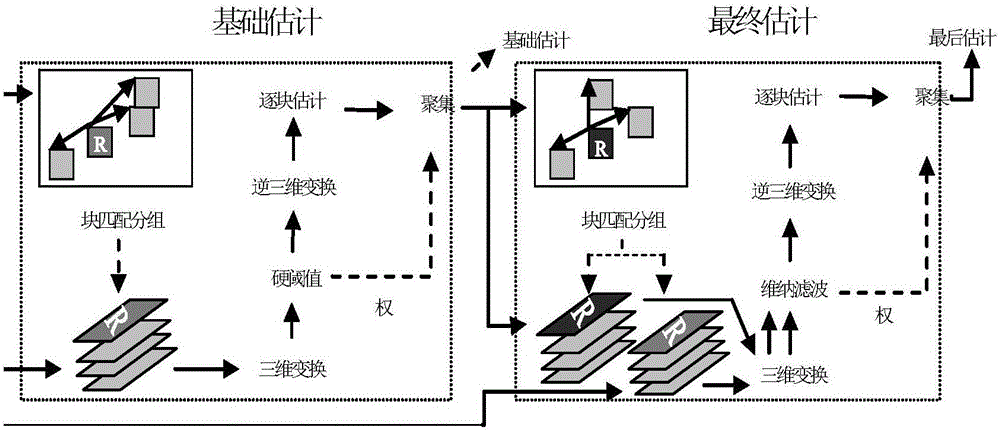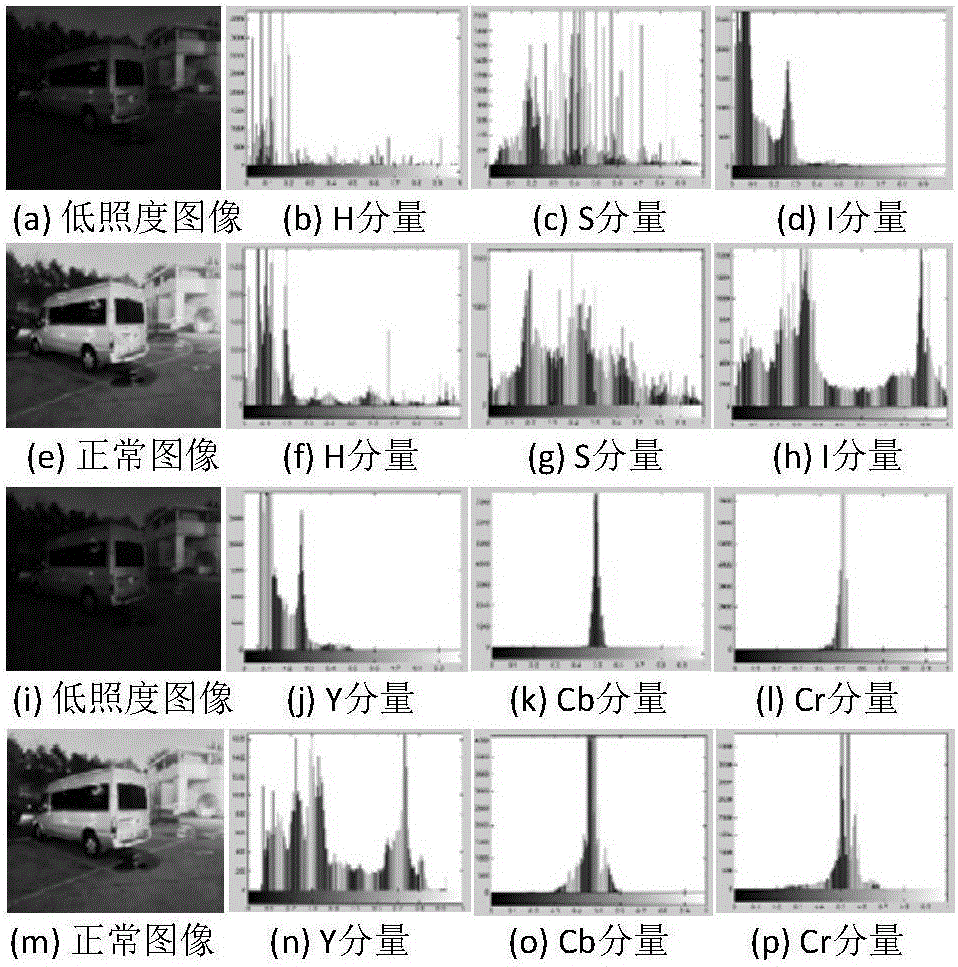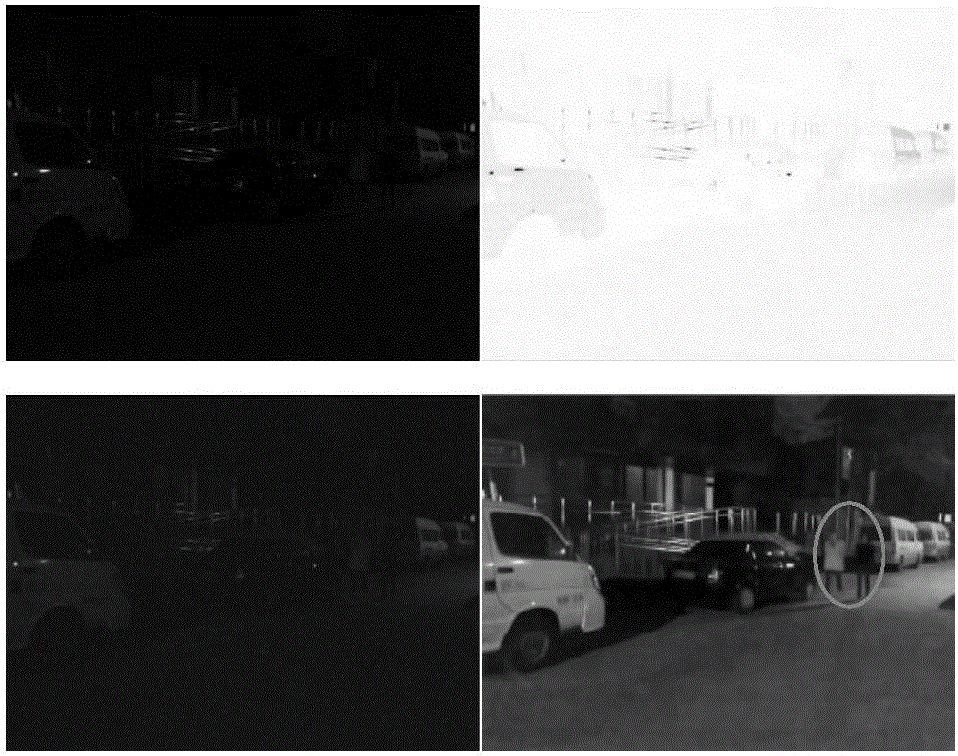Physical model-based low-illuminance image enhancement algorithm
A physical model and image enhancement technology, which is applied in image enhancement, image data processing, calculation, etc., can solve problems such as poor image quality, image graying, and insufficient fine detail processing, and achieve realistic enhancement effects and increased brightness.
- Summary
- Abstract
- Description
- Claims
- Application Information
AI Technical Summary
Problems solved by technology
Method used
Image
Examples
Embodiment Construction
[0028] The present invention will be described in further detail below in conjunction with the accompanying drawings and specific embodiments.
[0029] Analyze the noise of low-illumination images, mainly including impulse noise generated during transmission and storage, Gaussian noise generated by various devices and transmission channels, and Poisson noise generated when the illumination is very small. image max. 3D denoising is the most suitable denoising method for low-light images, among which Dabov K, Foi A, etc. [9] The proposed three-dimensional block matching denoising method (BM3D) is considered to be the best denoising method at present. It is a denoising method based on enhanced sparse representation in the transform domain. The main ideas are as follows:
[0030] First of all, grouping is performed. This process is to combine two-dimensional image blocks of similar structure to form a three-dimensional array, and then use collaborative filtering to obtain the opt...
PUM
 Login to View More
Login to View More Abstract
Description
Claims
Application Information
 Login to View More
Login to View More - R&D
- Intellectual Property
- Life Sciences
- Materials
- Tech Scout
- Unparalleled Data Quality
- Higher Quality Content
- 60% Fewer Hallucinations
Browse by: Latest US Patents, China's latest patents, Technical Efficacy Thesaurus, Application Domain, Technology Topic, Popular Technical Reports.
© 2025 PatSnap. All rights reserved.Legal|Privacy policy|Modern Slavery Act Transparency Statement|Sitemap|About US| Contact US: help@patsnap.com



